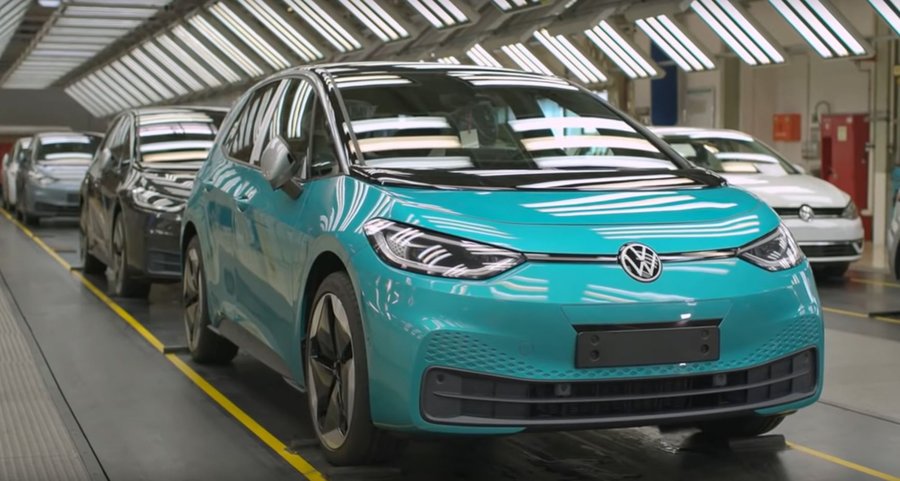VW Group has four brands that will benefit from the technology developed for the ID.3. There's Skoda, which so far has shown interest in making a crossover, SEAT with the el-Born (a copy of the ID.3) and soon the Cupra crossover, as well as Audi. On top of this, a deal has been signed with Ford under which they too will use the architecture.
So we were curious to see how the ID.3 is made since it will impact about a million cars per year by around the middle of next decade.
This potential Golf killer is put together in Zwickau, Germany, and it's almost like a truck or a classic SUV. The whole floor is assembled around the battery pack, complete with front and rear suspension, brakes, and even the rear-mounted motor. By the way, those aren't discs at the back. Volkswagen is good at keeping costs down, and that's especially necessary for its EVs. You're not going to sell lots of them if people can't pay the list price.
There are actually three configurations for the battery -45, 58 and 77 kWh. The smallest one looks the same but has fewer cells under the metal while the maxed-out version has an added third system where the trunk would be. Obviously, the crossovers and sedans would have larger wheelbases, but it's worth noting that the ID.3 is already larger by about half a foot than the Golf, at least when it comes to the wheelbase. It's also much taller.
The body is welded separately and by the time it meets up with the battery, it's already been painted. Much of the process is automated, even part of the final inspection. However, we do see technicians screwing in bolts for the suspension and adding final trim. It looks like the dash is already there, which would have been supervised and partly executed by people.

